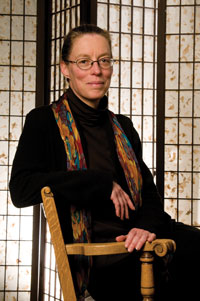
Mary Levin photo
As told to Jonathan Kiefer

There's a certain amount of theater in teaching. I've realized, for example, that it doesn't matter if you give students a list of things to bring into the field; they'll still bring things they want to bring, like extra makeup and hair dryers and flip-flops. So we started modeling fi eld gear in class. All the things you might have to wear on the outer coast of Washington when it's cold and stormy, I'd wear that stuff to class. There's only so much, honestly, that you can learn in a classroom. Even using multimedia and videos and stuff: it's not the same as going out and getting wet. It's great to see students get out there and realize that the ocean is not just something you lie next to when you go to the beach. It's this living breathing beautiful terrible, interesting place, full of all kinds of organisms and habitats. One of the things that's hard to do is to let students know that they have permission to delve deeply into science, not save the world starting next week. I really do think that if we end up rushing to save things without learning how those things work, from species to habitat to ecosystem, we are only doing ourselves a disservice. That's one of the biggest challenges we face in conservation today. We're losing the people who know the names of things and how things work in the wild world, even as we're gaining people who are well-versed in policy. The biggest challenge is showing how the depth of knowledge is relevant to the crisis that we face.